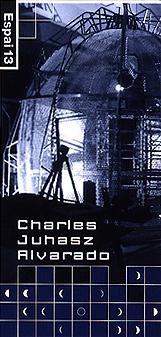|
TuTran, by Charles Juhasz Alvarado On Thursday, 14 October, the Espai 13 at the Joan Miro Foundation will be starting off the new season's cycle - An oasis in the blue dessert - with an exhibition by the Puerto Rican artist Charles Juhasz Alvarado on the subject of transit in the Caribbean. The curator is Michy Marxuach Charles Juhasz Alvarado was born in the Philippines, the son of a Hungarian father and Puerto Rican mother, and spent his childhood in the Dominican Republic, where he started at university. He now lives and works in Puerto Rico, but like many inhabitants of the Caribbean has lived a life of constant transit, or "circular immigration" as it is called there.
TuTran is a suitable metaphor with which to begin a cycle that aims to be a platform for dialogue with other artists and other cultures - i.e. with other points of view. It is a play on the words transit and train, but it is also an invitation to appropriation. The installation consists of a metal structure like a station platform, with bars from which hang 28 small maquettes produced by 28 guest artists. These maquettes can best be seen from an observatory containing 28 telescopes trained on each of the tiny installations, revealing them in minute detail. Leaving aside the specific origin of the installation - an urban train that is causing considerable controversy in San Juan, the capital of Puerto Rico - the exhibition contains a number of explicit and implicit underlying themes. First, the train and the different stations as a symbol of progress, of moving on, pulling others along too. The stations are also a metaphor for the accumulation or accretion of alternative experiences. The observatory, on the other hand, is a symbol of power and of the manipulation of a viewpoint. All this is linked to the importance of the number 28, a metaphor for the lunar cycles and the convergence of all viewpoints on the moon. Finally, Juhasz Alvarado likes to tell a story, as he calls it. It is a sum of many stories, added to each other, which could be continued in the Open Space at the end of this season's cycle or in some other encounter. Despite the meticulous dissection, therefore, both the artist and the curator leave the doors open to all manner of interpretations and responses. |
